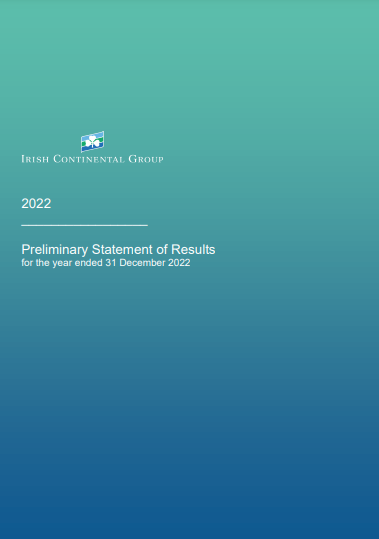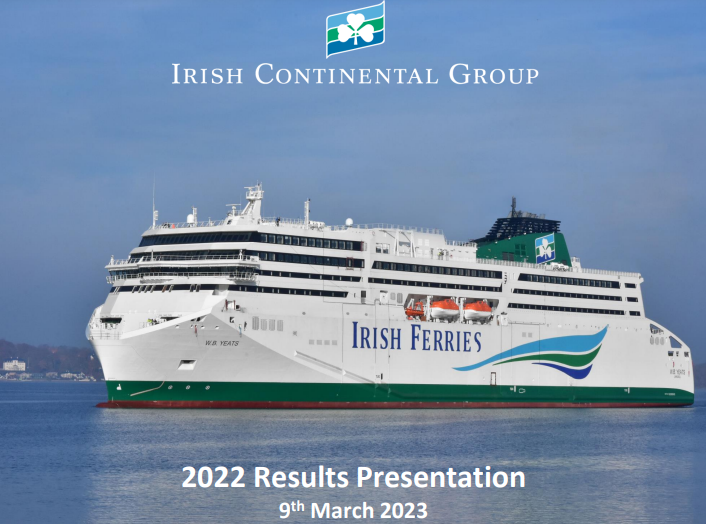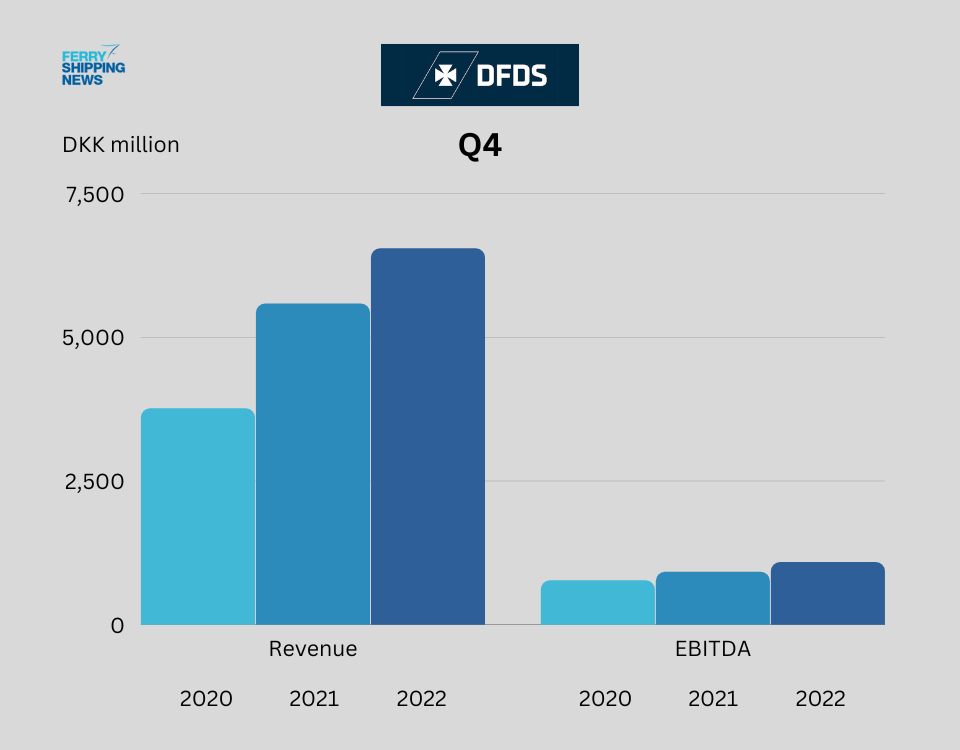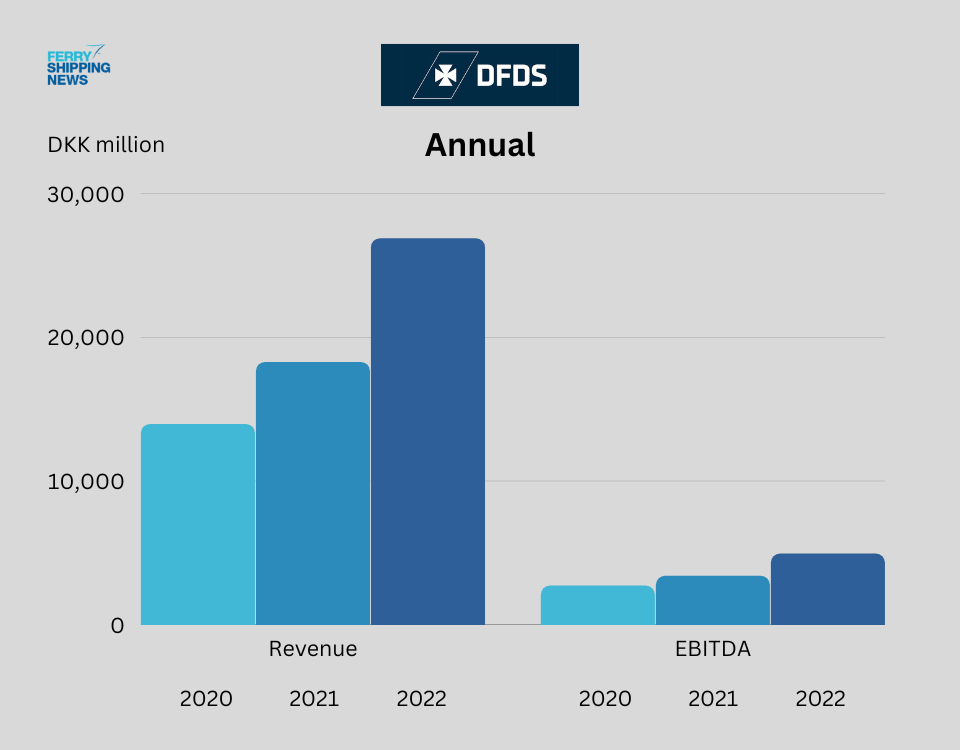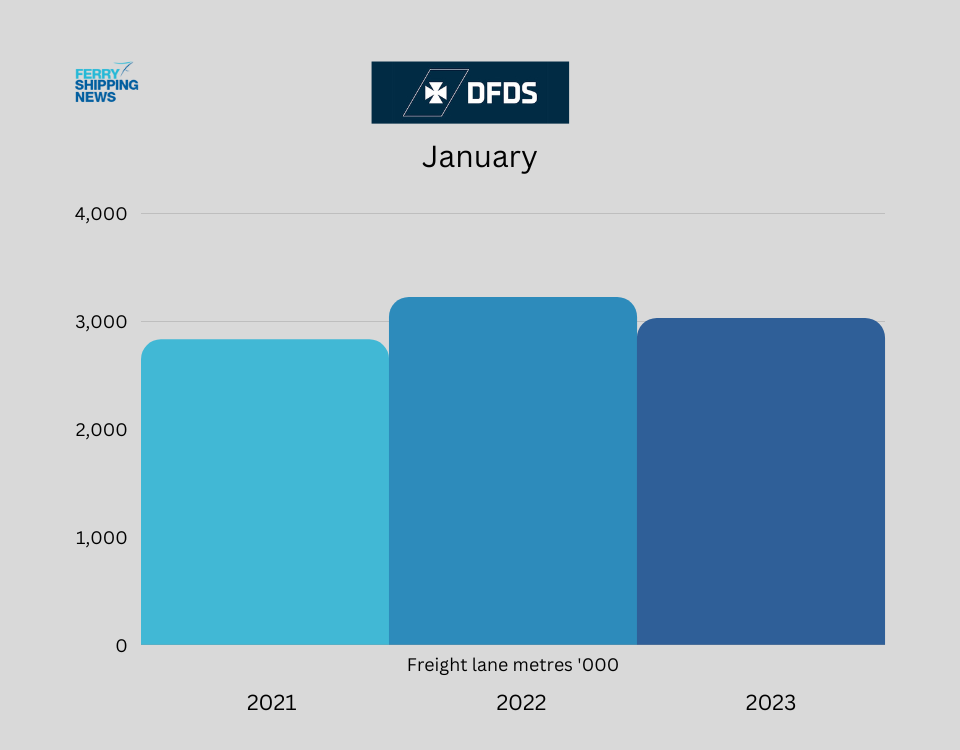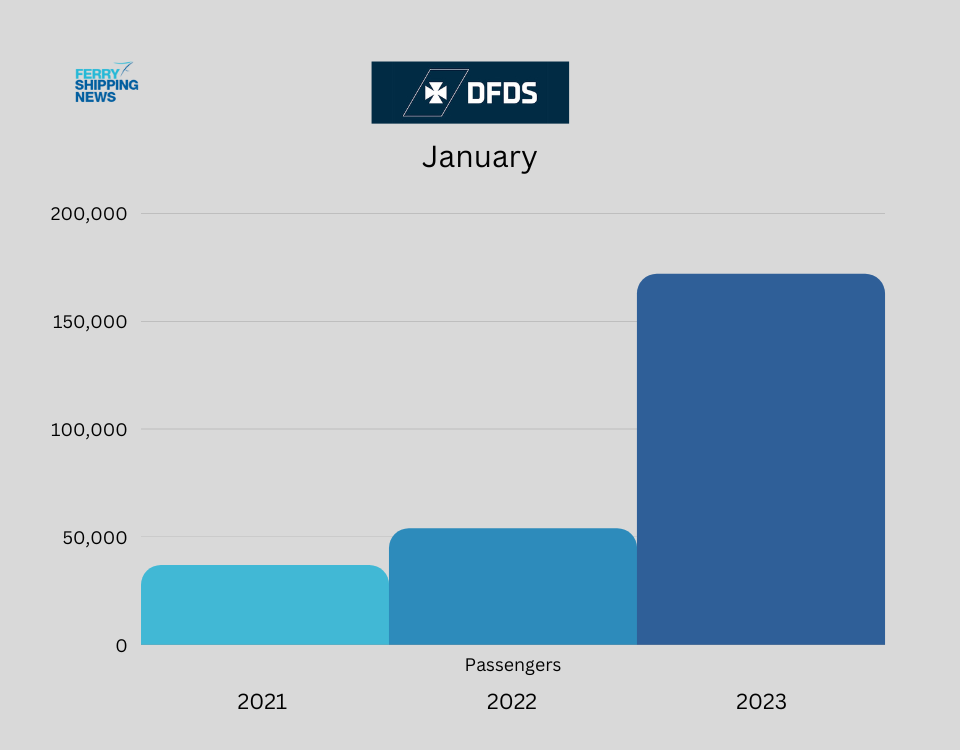Ferry – freight
- Total volumes in March 2023 were 12.0% below 2022.
- Volumes were 6.1% below 2022 adjusted for closure of the Izmir-Tarragona route and Channel that is impacted by a market decrease and overcapacity.
- North Sea volumes were below last year due to mainly fewer volumes between the Netherlands and the UK following an expectedly temporary drop in Continental vegetable and fruit volumes caused by high energy prices.
- Mediterranean volumes were above last year adjusted for the closure of the Izmir-Tarragona route.
- Channel volumes were below last year due to a continued market decrease, suspension of sailings by P&O Ferries in March 2022, and a negative impact from the entry of a third ferry operator, Irish Ferries.
- Baltic Sea volumes remained negatively impacted by the war in Ukraine.
- For the last twelve months 2023-22, the total transported freight lane metres decreased 6.0% to 40.8m from 43.4m in 2022-21. The decrease was 2.5% adjusted for the closed Izmir-Tarragona route and Channel.
Ferry – passenger
- The number of passengers continued to recover and increased 76.2% to 235k equal to 85% of volumes in March 2019, the latest comparable month pre-Covid-19.
- The number of cars equalled 76% of volumes in 2019.
- For the last twelve months 2023-22, the total number of passengers was 4.1m compared to 1.1m in 2022-21 and 5.1m in 2019.









